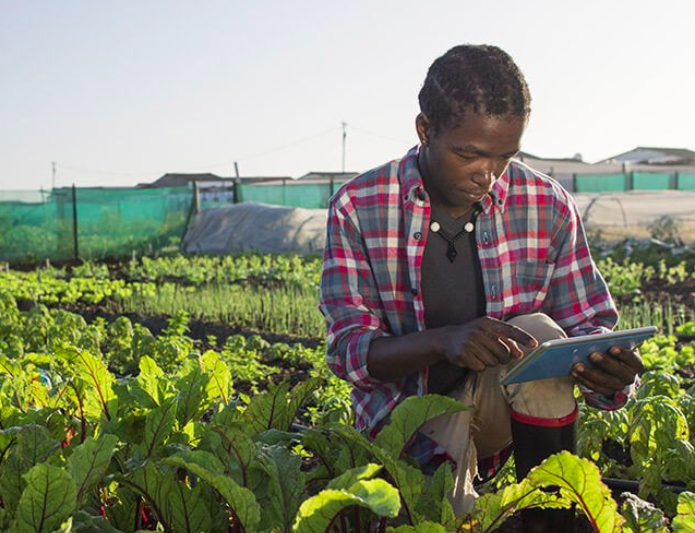Read the full article on LinkedIn.

There are many different applications of technology in the agricultural sector, from farmer education to remote crop monitoring and more
By the year 2050, the global population set to touch 9.6 billion, and the associated global food demand will rise at an unprecedented pace, resulting in pressure on farmers and farming industry. With the advent of extreme global weather conditions, unpredictable climate changes, and depleting water resources the agricultural sector is driven to embrace new progressive technologies to meet future food demand. To achieve this, the farmers can no longer rely on the traditional indicators for making cultivation decisions for plowing, sowing, and harvesting. The recent improvements in Information and Communication Technology (ICT) are remodeling the agricultural sector and shaping new milestones. Globally, agriculture is an indispensable sector with the majority of the rural population in developing countries depending on it. The traditional approaches to agriculture have numerous challenges in terms of production, marketing, and profit-making.
ICT successfully reformed the medical and education sector by bringing telemedicine techniques and e-learning platforms for the rural population in developing countries.
The traditional methods of understanding land for increasing yield were dependent on the physical evaluation by field specialists, which is now being replaced by high-quality sensors and embedded systems. The challenges of traditional agriculture are addressed significantly by using techniques of remote sensing, geo-information system, soil science, geo-fencing, and leveling of the plot with the help of satellites that are applied to increase productivity. The agricultural department of Turkey is monitoring weather conditions through weather satellites for pest control and frost prevention and provide information to farmers over their cell phones. Farmer uses the inputs received to alter the use of pesticides that result in improving crop productivity and soil fertility.
Advancement in information technology has become an asset to the design of effective policies for bringing reforms in the agricultural sector. It expedites the flow of information between farmers and policymakers to create a sustainable ecosystem for the farming community. The coordination among the national and non-governmental organizations, farming associations with consultative roles, and strategies can be a catalyst in the further development of ICT in the agricultural sector. The information related to government policies and programs, farmers’ schemes, innovation, and global best practices can be accessed directly by farmers in real-time and get their queries addressed as well on the same platform. The ICT enabled platform ensures the inclusiveness of farmers by connecting them directly to the experts of their respective fields. In Latin America, ICT-enabled tools, named #cropster, support sustainable agriculture by empowering local farmers by facilitating data collection, providing real-time data, and sharing information within the producer group, NGOs, and commercial partners. The application will enable them to make informed decisions and support communities at all levels of the supply chain.
The development in agricultural technology is not limited to increase farm production; however, it concentrates on creating better possibilities of interlinking financial institutions, service sector, and unorganized farmers group. This advancement can improve farmers’ revenue sources; empower them to make the right decisions about future crops, and sell their product through appropriate marketing channels to achieve maximum benefits of their inputs. In Ghana, women were engaged in informal processing of an agricultural export commodity Shea, which often generates the lowest return of their products in the supply chain due to the presence of multiple intermediaries.
The ICT enabled platform connected these women to a formal economy through Shea Network Ghana (SNG), providing them instant market prices and helping them sell their products directly to the consumers through mobile devices. Due to the access to new markets, the absence of intermediaries, and reduced transaction costs, their profits now increased by 82% and become able to secure buyers in advance. Furthermore, the banking sector can also provide support as crop insurance and micro-financing to small informal groups through a single platform. In addition to providing access to the global market, ICT plays a crucial role in creating a common economic platform for the marginalized community of society and empowering women in particular.
Information and Communication Technology is not an elixir for rural development problems but plays a significant role in elevating the status of rural poor and agriculture. It aims to empower farmers with the right information at the right time and place to improve their efficiency and increase economic returns per yield with a minimal environmental impact. It proficiently responds to agricultural challenges and creates an opportunity for farmers to increase their income and improve their life quality.
